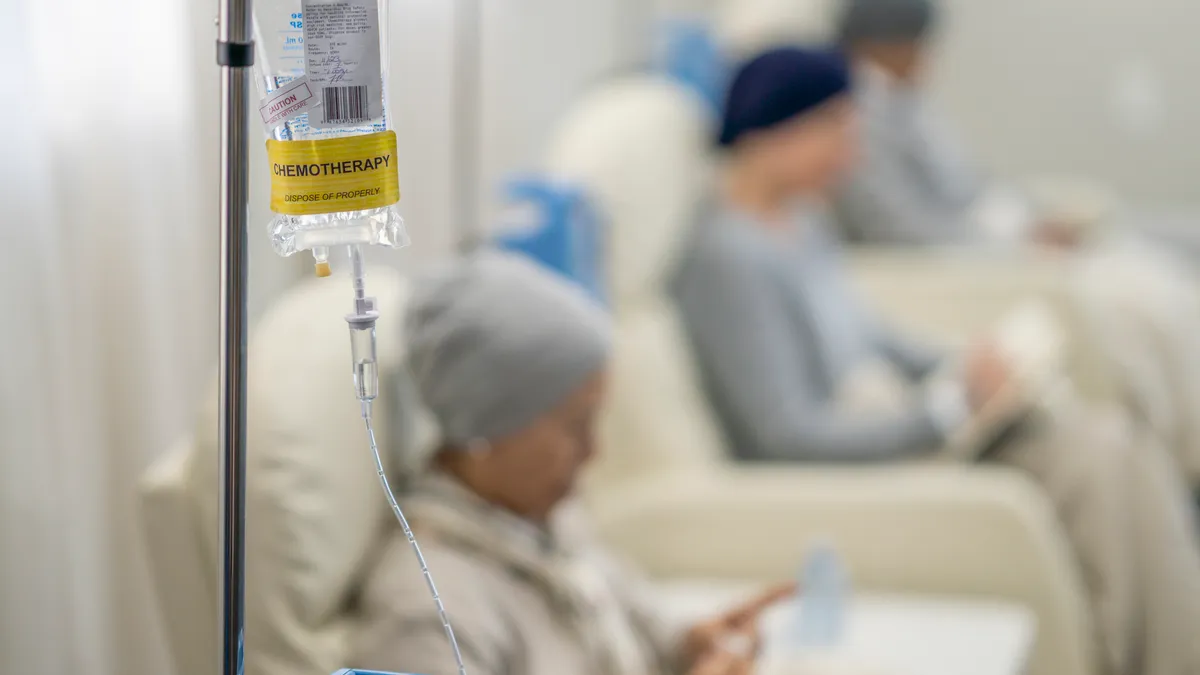All the scientific breakthroughs and billions of dollars spent on medical innovation don’t mean a thing unless patients have access to new treatments.
So when pharmaceutical companies develop cutting-edge oncology therapies that promise to dramatically alter the once-grim prospects of a cancer diagnosis, community oncology networks rely on drugmakers to build a bridge between innovation and clinical use.
A survey from Johnson & Johnson and The Harris Poll found that pharma companies are often failing in their effort to reach the doctors with their boots on the ground.
The Oncology Care Index survey revealed that 73% of the 500 U.S. healthcare professionals feel like there’s a gap between new drug approvals and what their patients actually receive. Three-quarters of the oncologists described the pace of new treatment development “overwhelming,” while seven out of 10 found navigating complex treatment guidelines a struggle.
“You have to have that knowledge at the point of care to impact change — that’s critical."

Dr. Fred Divers
Chief medical officer, American Oncology Network
The results suggested that drugmakers need to tune in to the broader picture and team up with providers across the country, said Biljana Naumovic, worldwide vice president of global commercial strategy at J&J’s pharma branch.
“We talk about many things that are coming from J&J and oncology on the innovation front, but what we don’t talk about is how you understand the challenges of our healthcare system more broadly, both in terms of the pace and speed of innovation combined with the connectivity and continuum of care for the patient,” Naumovic said.
A welcome burden
While more effective oncology treatments are welcomed by providers, dozens of drug approvals for cancer in 2024 have had them drinking from the firehose. The administrative effort alone has been a challenge, said Dr. Fred Divers, chief medical officer at the American Oncology Network.
“With practices scattered throughout 20 states, we realize the challenges of the pace of innovation and the complexity of discovery, as well as the application of that to benefit patients,” Divers said.
As head of a wide cancer provider network, Divers has a unique vantage point to understanding the struggles of community oncologists as they navigate a rapidly changing treatment landscape. Along with its data-focused spinoff company, Meaningful Insights Biotech Analytics, and Ascend Technologies, the AON has worked to curate patient data through natural-language processing and models, giving oncologists the option to be part of a huge collaboration effort that puts new biomarkers and treatments at their fingertips.
The AON has also pushed those capabilities into clinical trials, tracing the patient journey from diagnosis to therapy.
“Our partnership with the pharmaceutical industry is there to make sure patients have access to trials,” Divers said. “Through clinical decision support, we operationalize these innovations … and find the right patient for the right therapy at the right time.”
While Naumovic said J&J hasn’t secured further funding to implement more community outreach, the company hopes to provide some of the “connective tissue” that helps the healthcare system overcome the widening gap.
For Divers, the most important currency is knowledge. Oncologists on the front line need to know what’s out there.
“You have to have that knowledge at the point of care to impact change — that’s critical,” Divers said.
Busting roadblocks
Cancer care has come so far in such a small amount of time that complexity is now the enemy of progress. Patient administrative efforts accumulate and point-of-care physicians can’t keep up.
From J&J’s perspective, that’s not a red light on innovation.
“The pace is not going to slow down,” Naumovic said. “But to bring treatments and cures to some cancer types, we’re going to have to bring it to patients everywhere, and the best way to do that is through community oncology.”
Collaboration will remain the key for organizations like the AON, because a bridge isn’t built from just one shore.
“Twenty years ago, four cycles of platinum-based chemotherapy was all that was out there to help lung cancer patients — 20 years later, that landscape has changed, and we’ve made enormous strides toward precision and personalized medicine,” Divers said. “The challenge we meet head-on is operationalizing these insights as the complexity grows to benefit patients at a level they deserve.”













